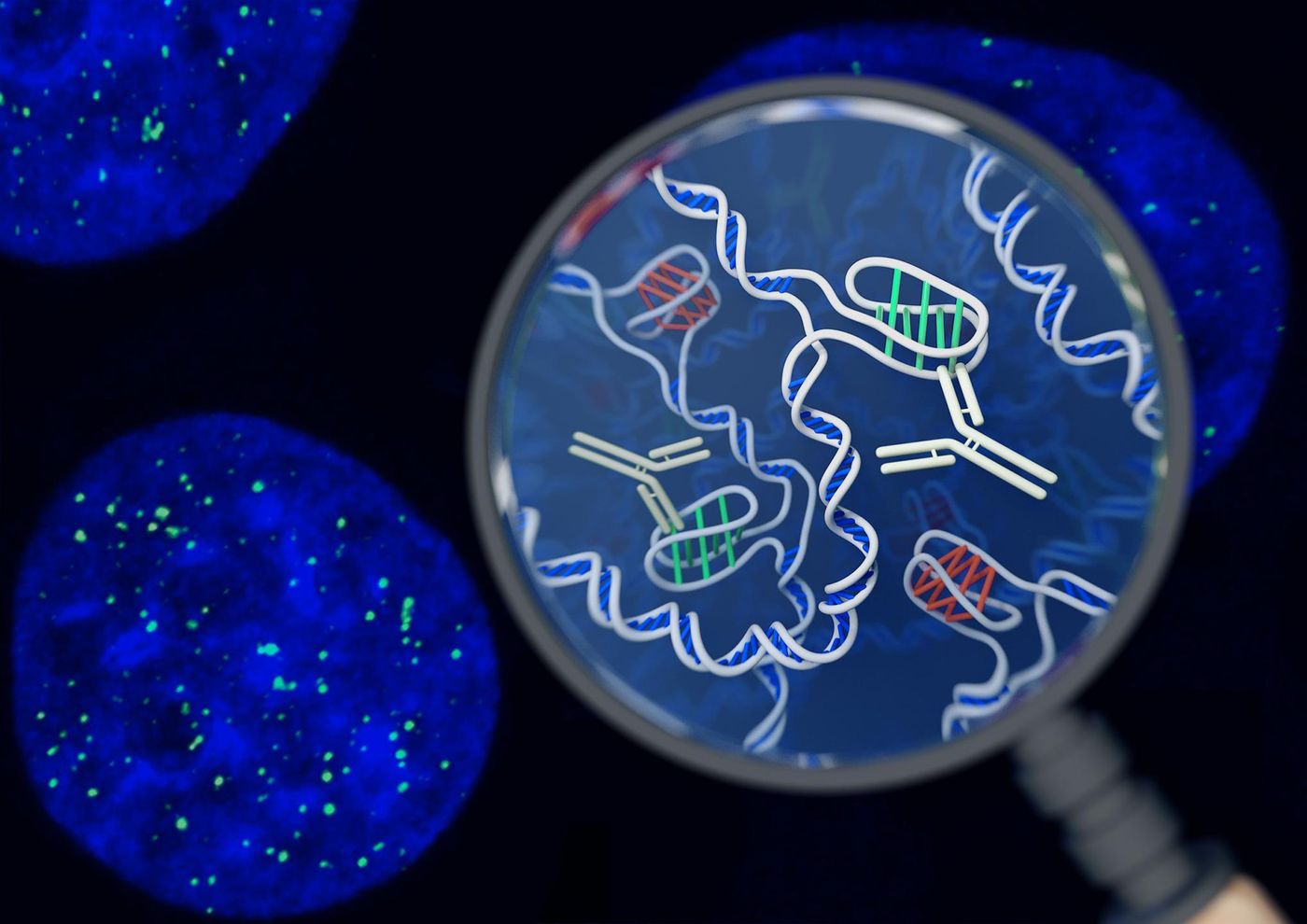Found in Live Cells: A New Form of DNA
When most people think about DNA, they think of the familiar double helix shape. But now researchers have identified a different kind of structure in DNA, one called the i-motif that is a kind of knot. This marks the first time it's ever been seen in live cells. The findings have been reported in Nature Chemistry by scientists at the Garvan Institute of Medical Research.
It has been known that DNA can take on physical shapes other than the double helix, but that had only been observed in the laboratory. Researchers have suggested that these structural differences might impact how genes are read by cellular machinery.
"When most of us think of DNA, we think of the double helix," said the co-leader of the research, Associate Professor Daniel Christ, Head of the Antibody Therapeutics Lab at Garvan. "This new research reminds us that totally different DNA structures exist - and could well be important for our cells."
There are four nucleotide bases that make up DNA: A, T, C and G. "The i-motif is a four-stranded 'knot' of DNA,” added study co-leader Associate Professor Marcel Dinger, Head of the Kinghorn Centre for Clinical Genomics at Garvan. "In the knot structure, C letters on the same strand of DNA bind to each other - so this is very different from a double helix, where 'letters' on opposite strands recognize each other, and where Cs bind to Gs."
These findings should resolve a debate about whether the i-motif was something only produced in the lab, which never appears under natural conditions. They used a special tool to find the i-motif, a very specific antibody. That molecule binds to i-motifs in a very specific way, like a key is made for a lock.
That antibody, which has been elusive and was critical for this work, does not attach to DNA when it is in a helical form. It also doesn’t recognize another form of DNA, G-quadruplex structures. The investigators found the i-motif DNA in a variety of human cell lines and used fluorescence to pinpoint its locations (in green).
"What excited us most is that we could see the green spots - the i-motifs - appearing and disappearing over time, so we know that they are forming, dissolving and forming again," said Dr. Mahdi Zeraati, whose work laid a foundation for this study.
The team also determined that during a particular point in the cell’s life, or what is known as the cell cycle, the i-motif appears - the late G1 phase. At that time, i-motifs show up in areas of DNA that control gene expression. They were also present at the caps on the ends of chromosomes, telomeres.
"We think the coming and going of the i-motifs is a clue to what they do,” said Zeraati. “It seems likely that they are there to help switch genes on or off, and to affect whether a gene is actively read or not."
"We also think the transient nature of the i-motifs explains why they have been so very difficult to track down in cells until now," added Christ.
"It's exciting to uncover a whole new form of DNA in cells - and these findings will set the stage for a whole new push to understand what this new DNA shape is really for, and whether it will impact on health and disease,” concluded Dinger.
Sources: AAAS/Eurekalert! Via Garvan Institute of Medical Research, Nature Chemistry










